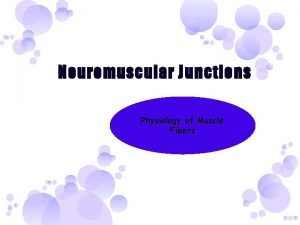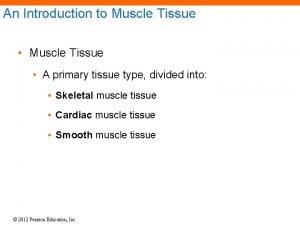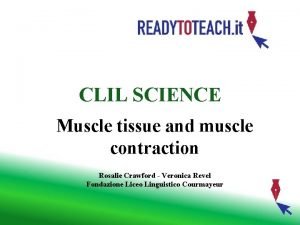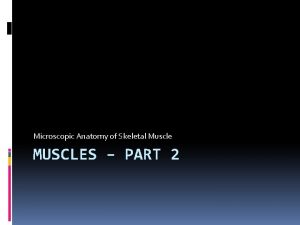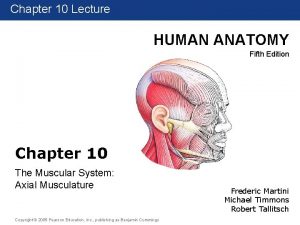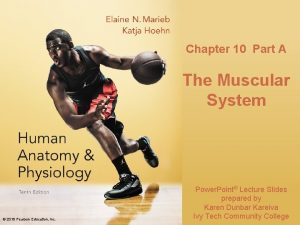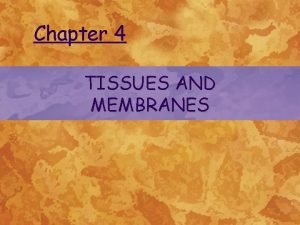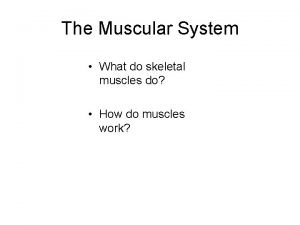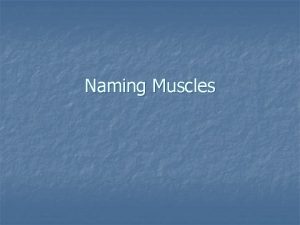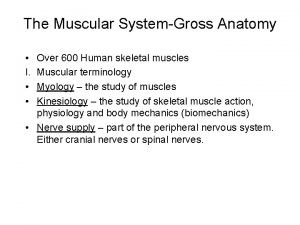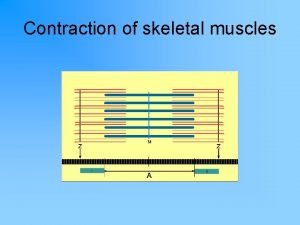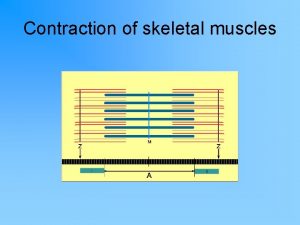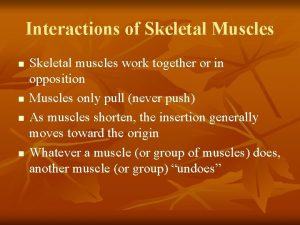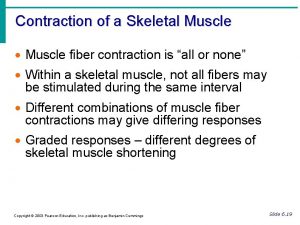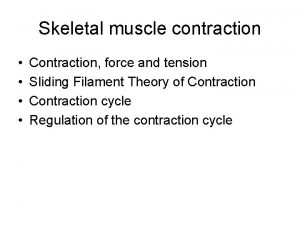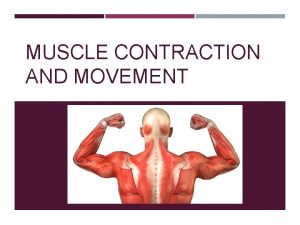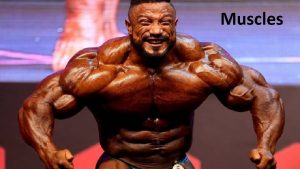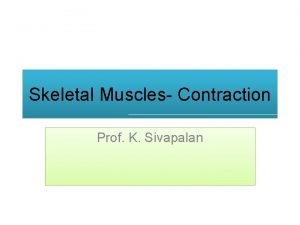Contraction of skeletal muscles Energy Needed for Contraction












- Slides: 12

Contraction of skeletal muscles

Energy Needed for Contraction 1. Aerobic Respiration (oxidative phosphorylation) Majority of ATP comes from this process. Glucose is the starting molecule along with oxygen. 2. A high energy molecule called creatine phosphate is present in myofibrils(only place in your body). � Used to make ATP quickly during prolonged exercise by phosphorylation 3. Anaerobic Respiration due to a lack of oxygen, glucose can only be partially broken down into a small amount of ATP. The left over “glucose” is found in the form of lactic acid.

Motor Unit is composed of ◦ Motor neuron – type of neuron that stimulates muscle tissue ◦ Muscle fibers – many fibers attach to one motor neuron Range from as far as 10 to as many as 2000! The place where the nerve meets the muscle is called the Neuromuscular junction

The nerve cell never touches the muscle cell Axon terminal Synaptic cleft (Synapse) Sarcolemma

How Does the Nerve communication with the Muscle Cell? Synaptic vesicles tiny sacs within the axon terminal release chemicals called neurotransmitters into the synaptic cleft. The specific neurotransmitter released at a neuromuscular junction is called acetylcholine (ACh) Protein receptors in the membrane

The Real Deal Axon terminal synapse sarcolemma Vesicle containing ACh

Keep in mind: If a stimulus causes a muscle cell contraction, then threshold has been reached When ever a threshold is reached, the muscle cell will contract to the fullest extent. (it can’t be stopped) This is called the All or none principle ****contraction of an entire muscle is different and will be discussed later.

Neuromuscular Junction 1. When ACh binds with the ACh receptors on the sarcolemma, protein channels open causing the diffusion of molecules (Ach is almost immediately broken down by acetylcholinesterase) 2. Sodium(Na+) begins to rush into the cell and potassium (K+) begins to trickle out, this causes a change in the overall charge of the membrane, which will quickly fix itself back to normal (resting potential) 3. A muscle action potential begins. This means that the current of Na+ and K+ will continue to travel down the sarcolemma.

http: //www. youtube. com/watch? v=Zsc. XOv. Dg. Cm. Q&feature=related http: //msjensen. cehd. umn. edu/1135/Links/Animations/Flash/0010 swf_action_potenti. swf 4. The action potential travels down t-tubule membranes deep into the cell causing the sarcoplasmic reticulum to release stored Ca+. 5. The Ca+ binds to proteins (tropomyosin and troponin) found on the actin which begin what is known as “the sliding filament theory” http: //www. youtube. com/watch? v=70 Dy. Jww. Fnk. U

(Steps of the Sliding filament theory) 6. The Ca+ attached to the proteins on the actin cause it to change shape, which exposes myosin binding sites (where myosin heads can attach to actin) 7. Using ATP for energy, the myosin heads attached to the binding sites on the actin 8. The myosin swivels and pulls the actin filament. 9. As the myosin head swivel, the ADP is released and the myosin head returns to its original position. 10. When ATP becomes available, the Myosin heads bind to the next site of the thin filament and pull them toward the center of the sarcomere 11. This continued action causes a sliding of the myosin along the actin 12. The result is that the muscle is shortened (contracted) http: //msjensen. cehd. umn. edu/1135/Links/Animations/Flash/0011 swf_breakdown_of_a. swf http: //msjensen. cehd. umn. edu/1135/Links/Animations/Flash/0008 swf_sarcomere_shor. swf

Action potential to t-tubules and release of calcium from the sarcoplasmic reticulum http: //www. youtube. com/watch? v=g. J 309 Lf. HQ 3 M&feature=related Nurses version http: //www. youtube. com/watch? v=ren_IQPOh. Jc& feature=related Human body, pushing the limits http: //www. youtube. com/watch? v=Fbv. RIvk 2 iw. Y &NR=1

Sliding
 Smooth muscle fusiform
Smooth muscle fusiform Is atp needed for muscle contraction
Is atp needed for muscle contraction A&p flix activity: resting membrane potential
A&p flix activity: resting membrane potential Contraction of muscles
Contraction of muscles Microscopic anatomy of skeletal muscles
Microscopic anatomy of skeletal muscles What is major muscle
What is major muscle Skeletal muscles anterior view
Skeletal muscles anterior view Organization of muscle fibers
Organization of muscle fibers Convergent fascicle arrangement
Convergent fascicle arrangement What tissue forms membranes
What tissue forms membranes Skeletal and muscular system
Skeletal and muscular system Platys muscle shape
Platys muscle shape Anterior view of human body muscles
Anterior view of human body muscles

